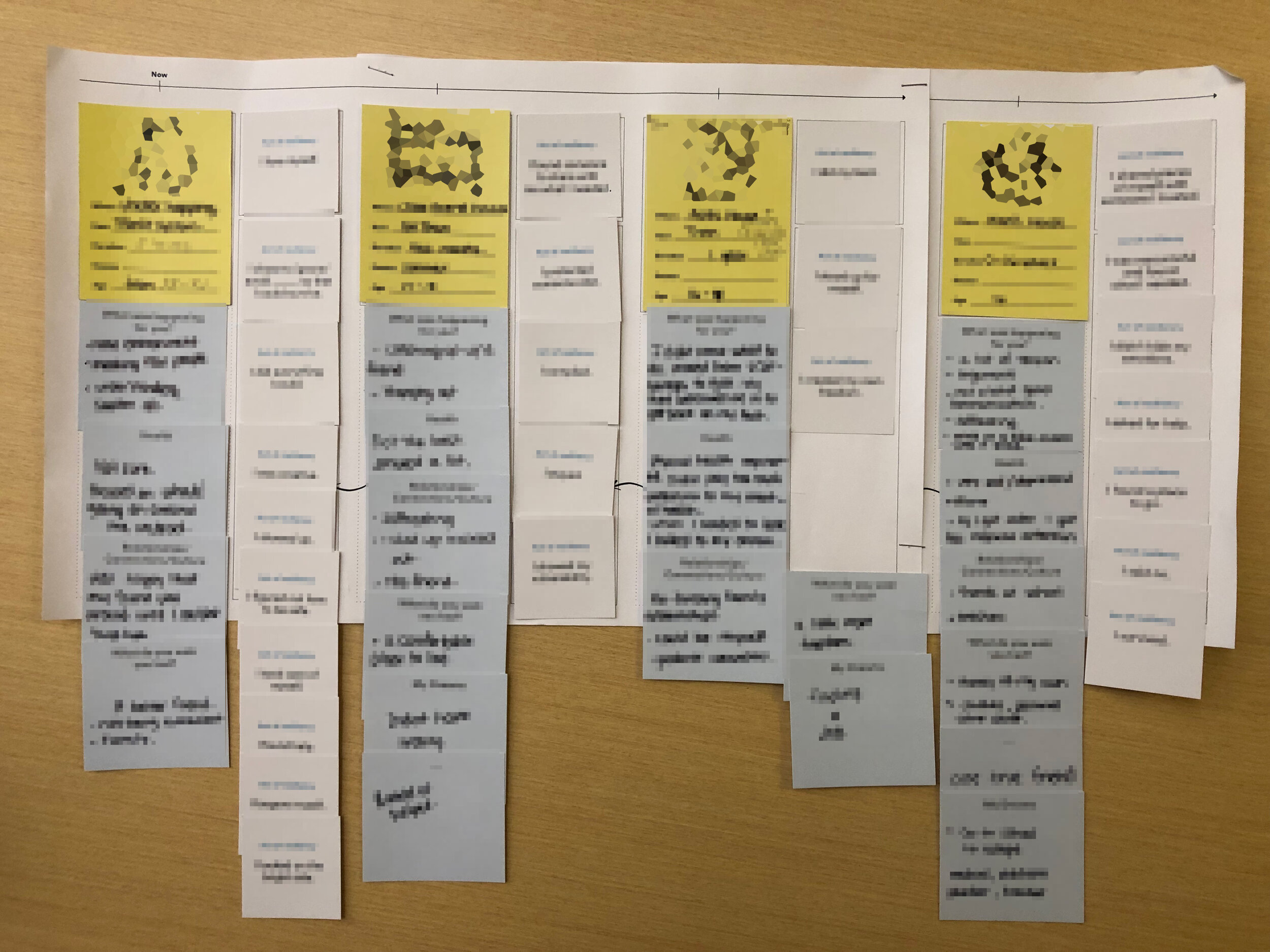Youth Homelessness
Mapping Young People’s Experiences
with Homelessness
Resiliency-based Service Design
Eva’s Initiatives for Homeless Youth, in partnership with Doblin Canada, was awarded funding from the Canadian National Housing Strategy for a multi-faceted engagement regarding youth homelessness and housing precarity. The focus of this initiative was to build qualitative research capabilities within Eva’s ecosystem, examine the experiences of young people moving into and out of homelessness, and to identify key moments of intervention where organizations could make a positive impact. Due to the complexity of this challenge, we adopted an approach that combined service design with a resiliency-based and trauma-informed framework. The outcome was a new research method, a set of potential intervention points that help expedite exits from homelessness, and a public toolkit outlining the process for other organizations to replicate or build upon.
Role & Credits
Design & Insights Lead
Created at Doblin/Deloitte for Eva Initiative’s for Homeless Youth and CMHC
Project Features
Mapping Solutions to Youth Homelessness, Charting a Brighter Future CMHC: a Place to Call Home
Eva’s Innovation Lab Spotlight (five-part series) Eva’s blog
How can a youth shelter expedite young people's exits from homelessness? Doblin Case Study
Recognition
Fast Company’s World Changing Ideas of 2020, Honourable Mentions for World Changing Idea North America and Social Justice
APPROACH
Our resiliency-focused approach was primarily based on the teachings of Dr. Vikki Reynolds, an instructor and Registered Clinical Counsellor, who adopts an anti-oppression and decolonizing framework in the space of social justice. We worked iteratively throughout the design and research process, engaging various stakeholders—including frontline staff, caseworkers, academic researchers, and people with lived experiences of homelessness and housing precarity—to develop and challenge our research plan and field artifacts.
We conducted research with 25 young people from a variety of backgrounds to uncover unmet needs and service gaps in their experiences. Throughout these interviews, we employed a new tool called “Resiliency Cards”—used to prompt interview participants to reframe difficult decisions they made through their journeys as acts of resilience. Reading and selecting cards such as “I figured out how to be safe” or “I protected myself” palpably shifted a young person’s narrative from helplessness to resilience and moments of pride—a tangible example of what it means to combine a trauma-informed approach with service design.
OUTCOMES
Our findings were consolidated into two overarching maps that illustrated different layers of a young person’s journey—their touch points with various systems, types of support networks (formal and informal), decision drivers, personal experiences, and gaps to address. We co-designed a number of solutions with Eva’s staff to address these gaps, and selected key areas of opportunity to further prototype. We also developed a toolkit that outlined the process and provided protocols for creating a “safe-enough space” when conducting research with a vulnerable population—including pre-interview best practices, interview guidelines, and steps to take post-interview.





